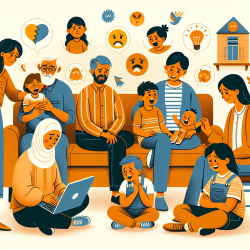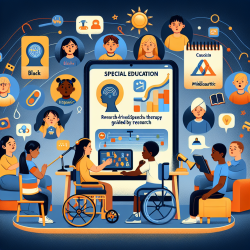Introduction
Emotion regulation is a fundamental aspect of child development, influencing various domains of functioning. The research article "Conceptualizing Emotion Regulation and Coregulation as Family-Level Phenomena" by Paley and Hajal (2022) provides a comprehensive exploration of how emotion regulation and coregulation unfold within family systems. This blog aims to highlight key findings from the research and offer practical insights for practitioners working with children and families, particularly in the context of online therapy services like those provided by TinyEYE.
Understanding Emotion Regulation and Coregulation
Emotion regulation involves the processes by which individuals manage their emotional experiences to achieve specific goals. Coregulation, on the other hand, refers to the external support caregivers provide to help children navigate their emotional experiences. Traditionally, research has focused on dyadic interactions, primarily between mothers and children. However, Paley and Hajal emphasize the importance of considering emotion regulation as a family-level phenomenon, involving multiple family subsystems, including caregiver-child, coparent, and sibling relationships.
Implications for Practitioners
For practitioners, understanding the family-centered perspective on emotion regulation can enhance the effectiveness of interventions. Here are some key takeaways:
- Expand Focus Beyond Dyads: Consider the role of triadic and whole family interactions in shaping children's emotion regulation skills. This broader perspective can inform more holistic intervention strategies.
- Incorporate Family Systems Theory: Integrate family systems theory into practice to address the interconnectedness of family subsystems. This approach acknowledges that changes in one part of the system can impact the whole.
- Enhance Coregulation Strategies: Encourage caregivers to coordinate their responses to children's emotional needs, fostering a secure family base that supports children's exploration and emotional growth.
Encouraging Further Research
The research by Paley and Hajal opens avenues for further exploration in several areas:
- Longitudinal Studies: Conduct longitudinal research to understand how emotion regulation and coregulation evolve across different developmental stages and family configurations.
- Diverse Family Structures: Investigate emotion regulation in diverse family structures, including single-parent households, same-sex parents, and multigenerational families.
- Cultural Contexts: Explore how cultural norms and values influence emotion regulation processes within families.
Conclusion
Emotion regulation is a complex, family-level process that significantly impacts children's development. By incorporating insights from the research by Paley and Hajal, practitioners can enhance their interventions, leading to better outcomes for children. To delve deeper into the original research, please follow this link: Conceptualizing Emotion Regulation and Coregulation as Family-Level Phenomena.










